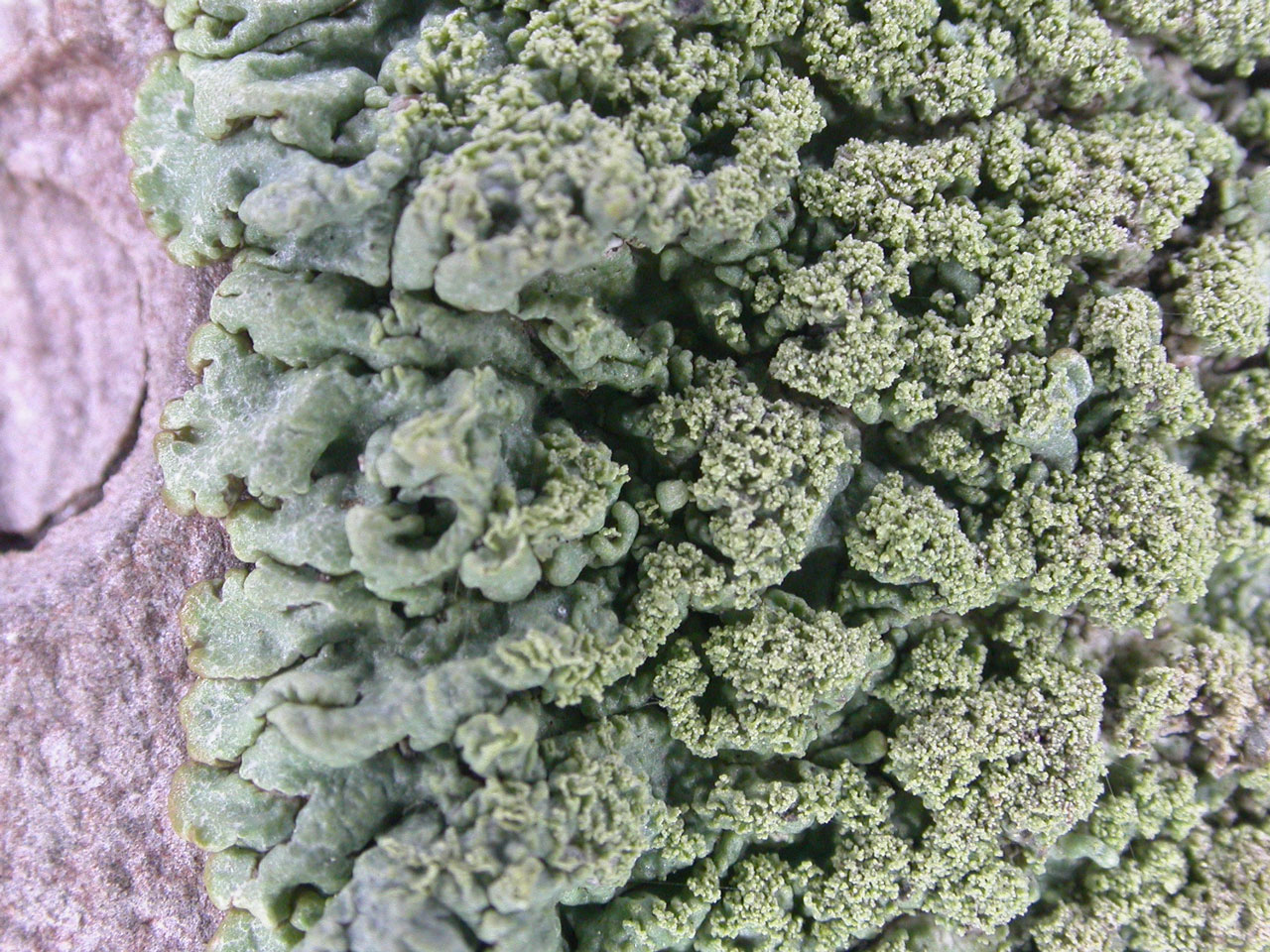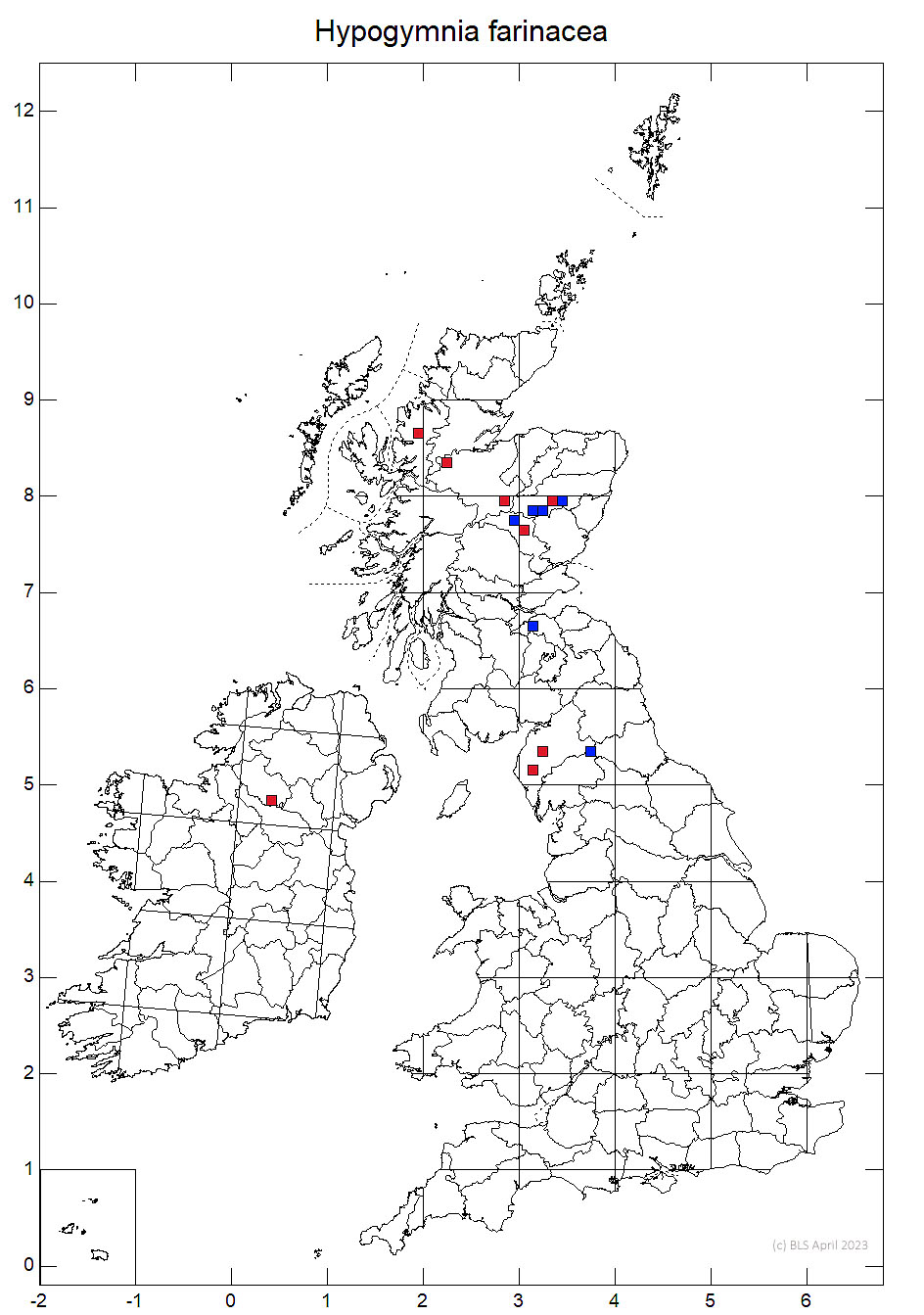A rare Hypogymnia, found acid bark on old trees in native pinewoods and on boulders at thinly scattered sites in the north. Distinguished from other Hypogymnia species by the diffuse, laminal, Pd– soralia.
Thallus to 5 cm diam., closely appressed, ± forming rosettes or irregularly spreading; lobes 1–3 mm broad, hollow, ± convex but flattened towards the ends, contiguous and overlapping, sometimes intricately convoluted at the centre, often ± discrete towards the margins; upper surface grey, wrinkled; soralia spreading, laminal; lower surface black. Apothecia not observed in British material. Cortex K+ yellow; medulla C–, K– , KC+ red, Pd–, UV+ pale violet-blue (chloroatranorin, atranorin, physodic and 3- hydroxyphysodic acids, and some unknowns).
Distinguished by the diffuse, laminal, Pd– soralia.
On trunks of Scots Pine and Alder in old growth Caledonian forests with outlying occurrences on boulders.

Rare, Scottish Highlands, S.E. Scotland & N. England, N. Ireland (Fermanagh); this species may be a recent arrival to Britain and seems to be starting to spread.
Rather rare, with few recorded sites, but potentially increasing.
Britain: Near Threatend
Scotland: Priority Taxon for Biodiversity in Scotland
Cannon, P., Divakar, P., Yahr, R., Aptroot, A., Clerc, P., Coppins, B., Fryday, A., Sanderson, N. & Simkin, J. (2023). Lecanorales: Parmeliaceae, including the genera Alectoria, Allantoparmelia, Arctoparmelia, Brodoa, Bryoria, Cetraria, Cetrariella, Cetrelia, Cornicularia, Evernia, Flavocetraria, Flavoparmelia, Hypogymnia, Hypotrachyna, Imshaugia, Melanelia, Melanelixia, Melanohalea, Menegazzia, Montanelia, Nesolechia, Parmelia, Parmelina, Parmeliopsis, Parmotrema, Platismatia, Pleurosticta, Protoparmelia, Pseudephebe, Pseudevernia, Punctelia, Raesaenenia, Tuckermannopsis, Usnea, Vulpicida and Xanthoparmelia. Revisions of British and Irish Lichens 33: 1-98.
Text by N A Sanderson, based on Cannon et al (2023).



